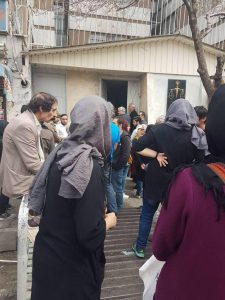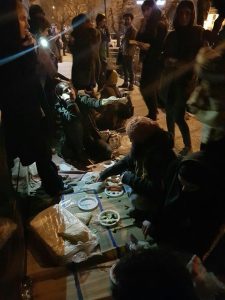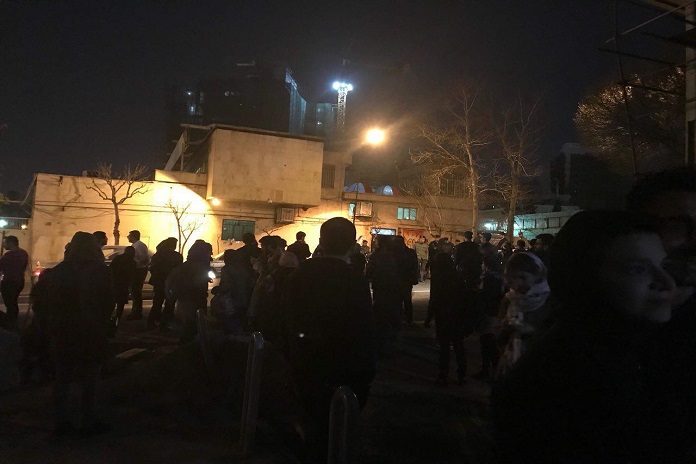According to the Campaign for the Defense of Political and Civil Prisoners, on March 8, 2018, several civil rights activists organized a rally in front of the Ministry of Labor building in Tehran. The gathering was dragged out by police intervention. According to reports published in some media outlets, 84 people (59 women and 25 men) were arrested yesterday at the gathering.
Telegram channel Call of March 8th rally reported on detainees yesterday saying: “According to the latest information, 18 women and 8 men from the International Women’s Day’s Rally are still in detention, and despite their families’ pursuit, they have been referred to the public prosecutor’s office of Ershad 21 area of Tehran Located on Bukhara Street. the situation of detainees is still unclear. “
It is reported that last night, the male detainees were transferred to the Vozra detention center and today they send them to public prosecutor’s office of Ershad 21 area in Tehran. They have issued 30 million tooman bail for Jawad Tavaloli and 200 million tooman bail for Ali Salem. Ali Salem, a journalist for the Andisheh Group of the Shargh Daily newspaper is scheduled to be transferred to Feshafoyeh Prison today.
“The detainees of the March 8 rally were first transferred to the security police on Gisha Street and then to the Vozara detention center. ” the channel said earlier. Many members of the families and friends of the affected people called for the release of the detainees by gathering in front the security police office. At around 11pm on March 8, about 10 detainees were released, but they again tried to disperse the families. It seems that they intend to hold activists or those with a history of detention. “
In a statement issued by organizers of the gathering, gender-based discrimination and the violation of women’s rights in various areas of the Iranian society, including the inequality of women and men in Iran’s laws, have been challenged.
Elimination of gender discrimination in the field of employment and education, the provision of women’s presence in all businesses without exception or neglect and the elimination of all gender barriers in the employment of women in governmental and nongovernmental organizations, the establishment of adequate unemployment insurance for all unemployed women and housewives, and ability for housewives to receive pensions and disabilities, equal pay for women for the same job category, the right to maternity leave, Decriminalization of the women’s movement in Iran, the adoption of supportive laws on the prevention of domestic violence, street harassment and sexual harassment at the workplace and creating shelters for women victims of domestic violence were listed demands in the statement by women activists.
Another issue that has been emphasized in the statement by women activists is recognition of the right to choose whether to cover themselves or not, which they claim is “the explicit right of women “.
They also want the prevention any form of violent crackdown on protesters and the prosecution of women who choose not to wear a hijab. Over the course of the new round of the protests against the forced hijab in Iran known as Girls Of Revolution Street(Dokhtaran Khiaban Enghelab), more than 40 women have been arrested. The verdict of Narges Mohammadi, a protester to the forced veil, was communicated to her lawyer on March 8th 2018, and she was sentenced to two years in prison which 21 months of the sentence is suspended for 5 years.
Parvaneh Salahshory , the head of the women’s parliamentary caucus said on Wednesday as a result of the congressional session held, they will have a meeting to review the forced hijab law after the Iranian New year. 
The compulsory slogans of women’s Islamic dress in Iran’s public places and passages were documented by testimonies of historical documents and articles written in newspapers in March 1979, less than a month after the revolution.
From July 5, 1980, before the Islamic veil became a mandatory public law, they slowly introduced the hijab and banning women from entering government agencies and offices if they did not wear one. In the beginning of the eighties, the Islamic hijab became wide spread across Iran.


